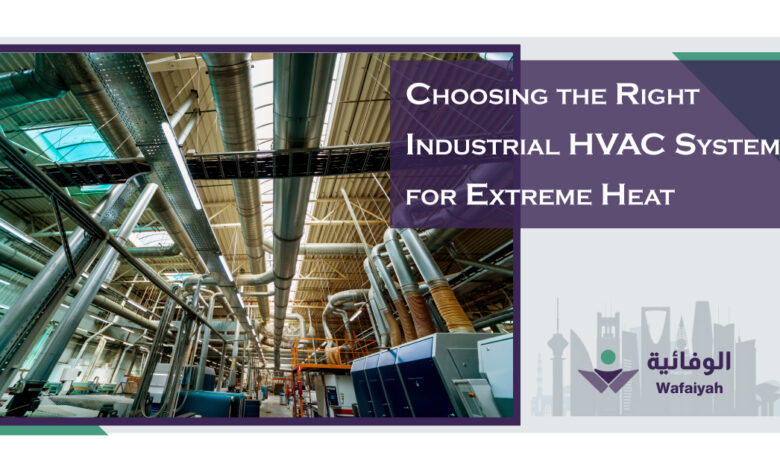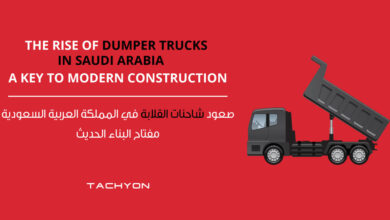Choose the Right Industrial HVAC System for Extreme Heat in Saudi Arabia

Managing indoor climate in Saudi Arabia’s industrial spaces requires tailored HVAC solutions built for resilience and efficiency. With summer temperatures often exceeding 45 °C, industrial facilities face unique challenges in maintaining consistent internal temperatures, preserving equipment, and controlling operational costs. Selecting the correct cooling system is not a luxury but a necessity in extreme environments.
Factory floors, warehouse facilities, data centers, and processing plants each present their own heat loads and ventilation needs. The right HVAC system must address those specific demands while ensuring uninterrupted performance through prolonged high heat and dust exposure. Today’s intelligent HVAC solutions offer durability, adaptability, and long-term energy savings for Saudi industrial operations.
Understanding the Impact of Extreme Heat
Heat Challenges in Saudi Industrial Environments
Saudi Arabia’s scorching temperatures impact more than just operator comfort. Overheating can decrease productivity, damage temperature-sensitive equipment, and trigger more frequent maintenance. Data centers and production lines require stable, precise conditions to remain efficient. HVAC systems must offset significant heat gain from outdoor conditions and internal industrial processes to maintain stable, safe environments for both machinery and personnel.
Performance and Energy Efficiency Priorities
In extreme climates, HVAC systems must balance performance with energy consumption. Systems that run inefficiently in high heat draw excessive power and erode profitability. Therefore, industrial operators must evaluate HVAC options based on their ability to sustain cooling output at extreme temperatures and to operate economically over their lifecycle. Optimizing efficiency isn’t an option—it’s central to operational viability.
Types of HVAC Solutions for Industrial Settings
Air‑Cooled and Water‑Cooled Chillers
Large industrial sites often rely on chillers to provide precise chilled water for cooling coils or central air distribution. Air‑cooled chillers use ambient air to reject heat, while water‑cooled units use cooling towers and water circuits. Air‑cooled chillers are simpler and require less infrastructure, but their performance falls under high ambient temperatures.
Water‑cooled chillers maintain greater efficiency under high heat due to the lower temperature of tower-cooled water, making them suitable for heavy-duty industrial or data center applications. Although they require extra components, their ability to maintain performance and reduce energy consumption makes them a popular choice for large-scale cooling
Rooftop Packaged Units for Simplicity
For less temperature-sensitive industrial spaces, rooftop packaged units offer an all‑in‑one alternative. Condenser, compressor, and evaporator are contained in a single assembly placed above the building. They simplify installation and centralise maintenance.
In extreme heat, rooftop units must be designed for durability against UV exposure and frequent startup and shutdown cycles. Innovative versions pull in 100 percent outdoor air with dedicated systems to ensure proper ventilation for staff workspaces
Variable Refrigerant Flow (VRF) Systems
Though more common in commercial spaces, VRF systems are gaining traction in industrial offices and control rooms. They use variable-speed compressors to deliver refrigerant to multiple indoor units with precise temperature control. Modern VRF units with heat-recovery capability excel at managing diverse climate zones within the same building, adjusting cooling where heat loads are variable.
They are efficient under part-load conditions and offer flexible zoning, making them suitable for non-production areas that require targeted comfort and energy savings even in a hot environment .
Chilled Beams for Energy Savings and Comfort
Chilled beam systems, common in Europe and niche in MENA industrial offices, rely on chilled water and natural convection without large ducts or fans. Passive beams drop cool air into spaces, while active systems mix pre-conditioned air for enhanced climate control. These systems significantly reduce air-handling requirements and noise.
Though chilled beams can be highly energy-efficient, they’re less suitable for humid areas or floors with ceiling heights above 2.7 m. In Saudi Arabia’s dry conditions, well-insulated chilled beams can perform well in office zones of industrial facilities
Key Considerations for HVAC Selection
Load Assessment and Design Requirements
A proper evaluation starts with calculating the building’s cooling load, which includes outdoor climate, internal heat from machinery, occupancy, and solar gain. Industrial sites often require large capacity systems designed to cope not just with ambient heat but also internal heat sources. Professional load calculations prevent oversizing or undersizing—which can lead to inefficiencies and higher operating costs.
Energy Efficiency Ratings and Local Climate Standards
Industrial operators should prioritize HVAC units with high efficiency ratings designed for extreme ambient temperatures. SEER, EER, and IEER metrics indicate ongoing energy use. Seek equipment proven to maintain performance and efficiency at 50°C or above to avoid efficiency losses during peak summer.
Government incentives and compliance with Saudi energy regulations often require high-efficiency systems. Industrial professionals should look for units with recognized efficiency benchmarks and adaptive operational controls to meet those requirements.
Maintenance, Durability, and Lifecycle Costs
Industrial HVAC systems face particulate-laden air and heavy usage. Systems must allow easy filter access, robust components, and outdoor protection. Chillers, rooftop units, VRF units, and chilled beams each present different maintenance needs. Lifespan and serviceability—access to parts, vendor support, and training—should weigh heavily in procurement decisions.
Lifecycle cost assessments should include capital expenditure, energy consumption, maintenance, and downtime. Though sustainable systems may have higher upfront costs, they often offer a payback period measured in months due to reduced energy and maintenance savings.
Integrating with Smart and Automated Controls
Building Management and Remote Monitoring
Digitally controlled HVAC systems can be monitored remotely, with data on compressor performance, refrigerant pressures, temperature, and energy use. Smart building platforms enable proactive maintenance, fault detection, and fine-tuning to maintain efficiency under changing loads and conditions.
In Saudi Arabia’s industrial context, real‑time monitoring helps prevent costly downtimes and reduces manual oversight requirements, enhancing predictive maintenance initiatives.
Zoning and Variable Control
Tailored climate control minimizes energy use where unused spaces are zoned down or shut off. Zoning is especially valuable in large industrial sites where production halls, offices, and storerooms have differing climate requirements. VRF and chilled-beam systems support zoned operations efficiently under extreme heat demands.
Case Example: Industrial HVAC in Gulf Facilities
In the UAE and Saudi Arabia, integrated HVAC solutions are being widely adopted. District cooling plants in master‑planned communities demonstrate effective large-scale deployment. Within individual factories and warehouses, packaged chillers, roof units, and VRF systems are common.
Diamond Air Design emphasizes selecting systems capable of handling ambient peaks above 50°C and recommends supplemental cooling or hybrid designs in high-load zones.
Solutions like VRF and rooftop packaged air handling units can exceed efficiency compared to older conventional split systems, while carefully designed chilled beam systems in office spaces can add ventilation and comfort benefits without relying solely on high-powered air handling.
Conclusion: Tailoring HVAC for Extreme Heat Resilience
Industrial HVAC systems in Saudi Arabia must be selected with rigor to handle extreme heat loads, dust, operational variability, and tight energy management goals. Options like chillers, VRF, rooftop packaged units, and chilled beams each offer distinct advantages.
Optimal system choice begins with detailed load assessments, energy efficiency benchmarking, ease of maintenance, and tech integration. By strategically combining smart controls, efficient equipment, and zoning, industrial facilities can maintain comfortable environments, safeguard equipment, and reduce energy costs—even in the Kingdom’s most challenging heat conditions.




